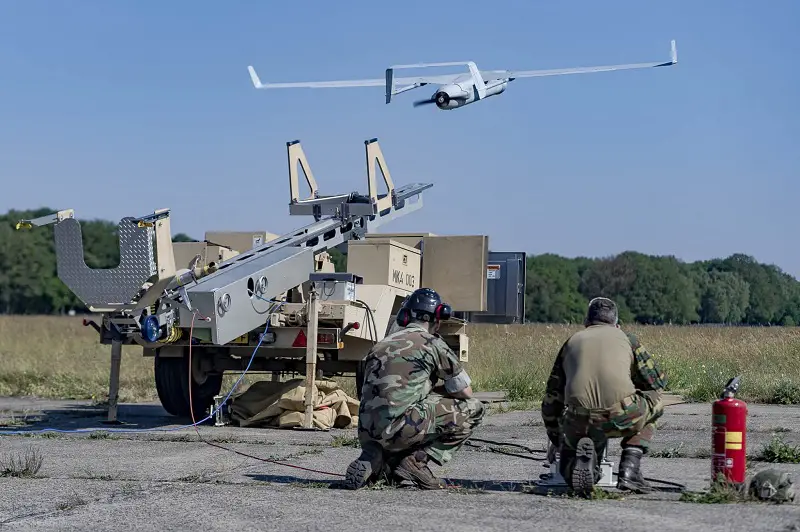Several Belgian troops from the new Integrator platoon of the ISTAR Battalion are participating in the Unified Torch exercise in Deelen, the Netherlands, during the month of June. They train for four weeks with the unmanned reconnaissance system Integrator alongside their Dutch counterparts from the Joint ISTAR Command (JISTARC). Several Belgian troops from the new Integrator platoon of the ISTAR Battalion are participating in the Unified Torch exercise in Deelen, the Netherlands, during the month of June. They train for four weeks with the unmanned reconnaissance system Integrator alongside their Dutch counterparts from the Joint ISTAR Command (JISTARC). The X-300 Integrator UAV (Unmanned Aerial Vehicle) begins its six-hour training flight. From the ground, a team of Belgian and Dutch soldiers carefully controls the drone. The goal is to observe fictitious crime activities in the vicinity of Deelen Air Base.
“The most important people are the ground crews. They make sure everything is ready. Also, we have a sensor operator. He manages the Integrator’s camera and films everything. And then, of course, there’s the operator, who controls the system and is in contact with the radios. At a higher level, there is of course the head of mission, who monitors everything and who is in contact with, for example, a forward air controller (JTAC),” says Emil, the Belgian Air Vehicle Operator (AVO).
“As part of an intelligence unit, we take aerial photos and video footage of the area. For example, we can detect enemy activity or track certain High Value Target vehicles. These images are viewed, analyzed and documented live,” says Ewan, the commander of the Dutch section of JISTARC.

Since 2020, Belgium has had two Integrator systems. If they add the three Dutch systems and the two Luxembourg ones, the Benelux has a total of seven Integrator systems. All these systems are part of a pool and are therefore available for all three countries. This means that a full Belgian crew can fly a Dutch aircraft and vice versa. The Netherlands provides the training and are also responsible for the maintenance of the equipment. In addition, all systems are registered in the Netherlands, which means that the devices must comply with Dutch laws and regulations. Each system comprises two drones. The Belgian Integrator drone platoon is still under development. With the first AVO graduates and an analyst in training, it is increasingly taking shape. Its own flight simulator is still installed in Heverlee for the time being, but will move to Lombardsijde, as will the military, in the future. By 2024, this platoon should be fully operational and will participate in a large-scale ISTAR exercise in Norway.
The Boeing Insitu RQ-21 Blackjack, company name Integrator, is an American unmanned air vehicle designed and built by Boeing Insitu to meet a United States Navy requirement for a small tactical unmanned air system (STUAS). The UAV carries a high-zoom day full motion video (FMV) electro-optical (EO) telescope, as well as a day and night FMV mid-wave infrared (MWIR)/EO dual sensor. The sensor suite also includes a visual detection and ranging (ViDAR) radar to search small objects on the sea surface, a laser designator, a pointer, and a rangefinder. Integrator is integrated with an encrypted line-of-sight datalink to relay the data to the control station. The datalink enables a communication range of 50nm.Integrator is a flexible and modular UAV platform with an open architecture. It can operate from austere land-based sites and maritime areas without the need for a runway. Being designed as a NATO-compliant platform, it enables interoperability across joint, coalition and allied forces. The UAV has a length of 2.5m, a wingspan of 4.9m, and a maximum take-off weight of 74.8kg.















